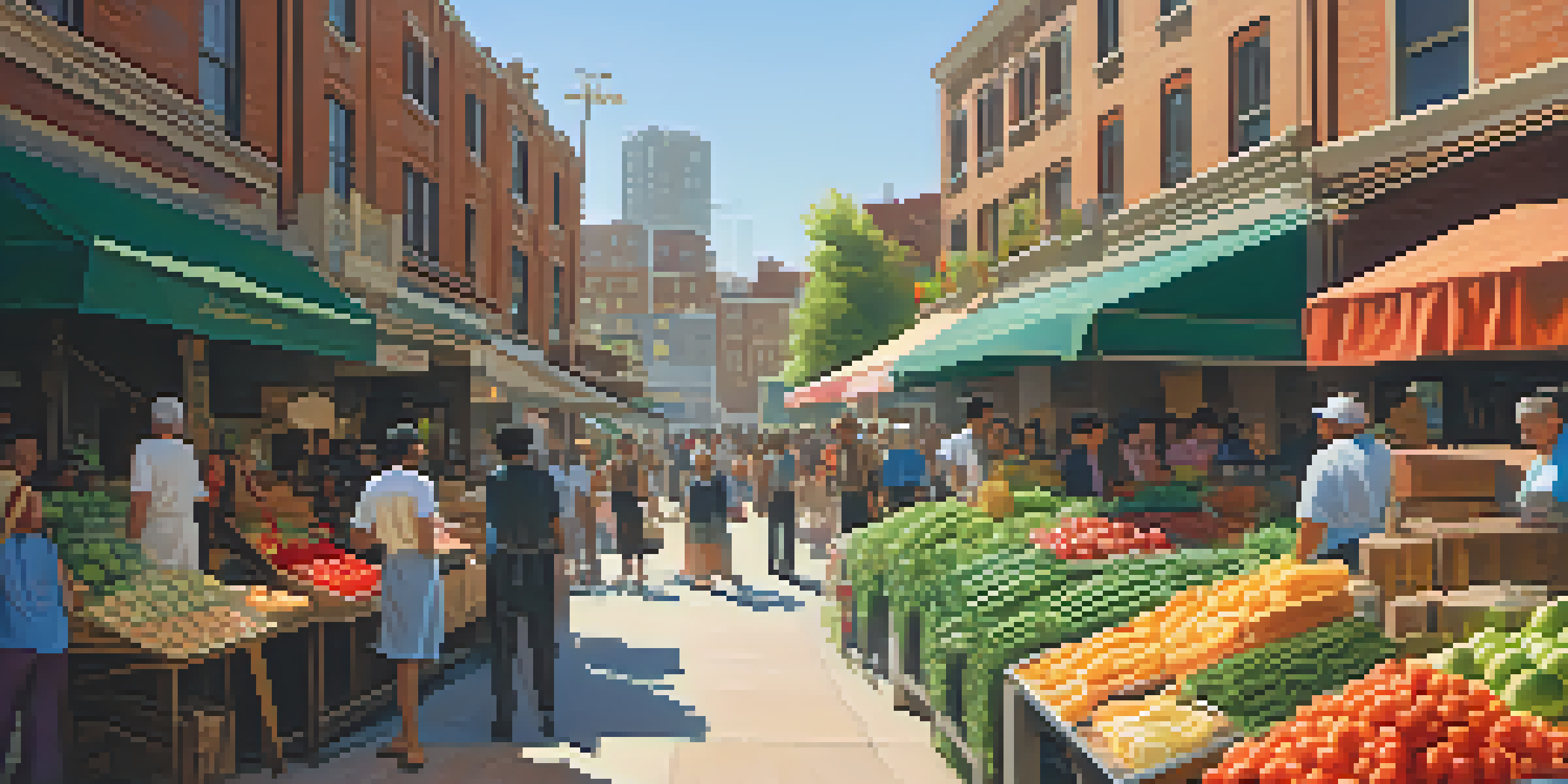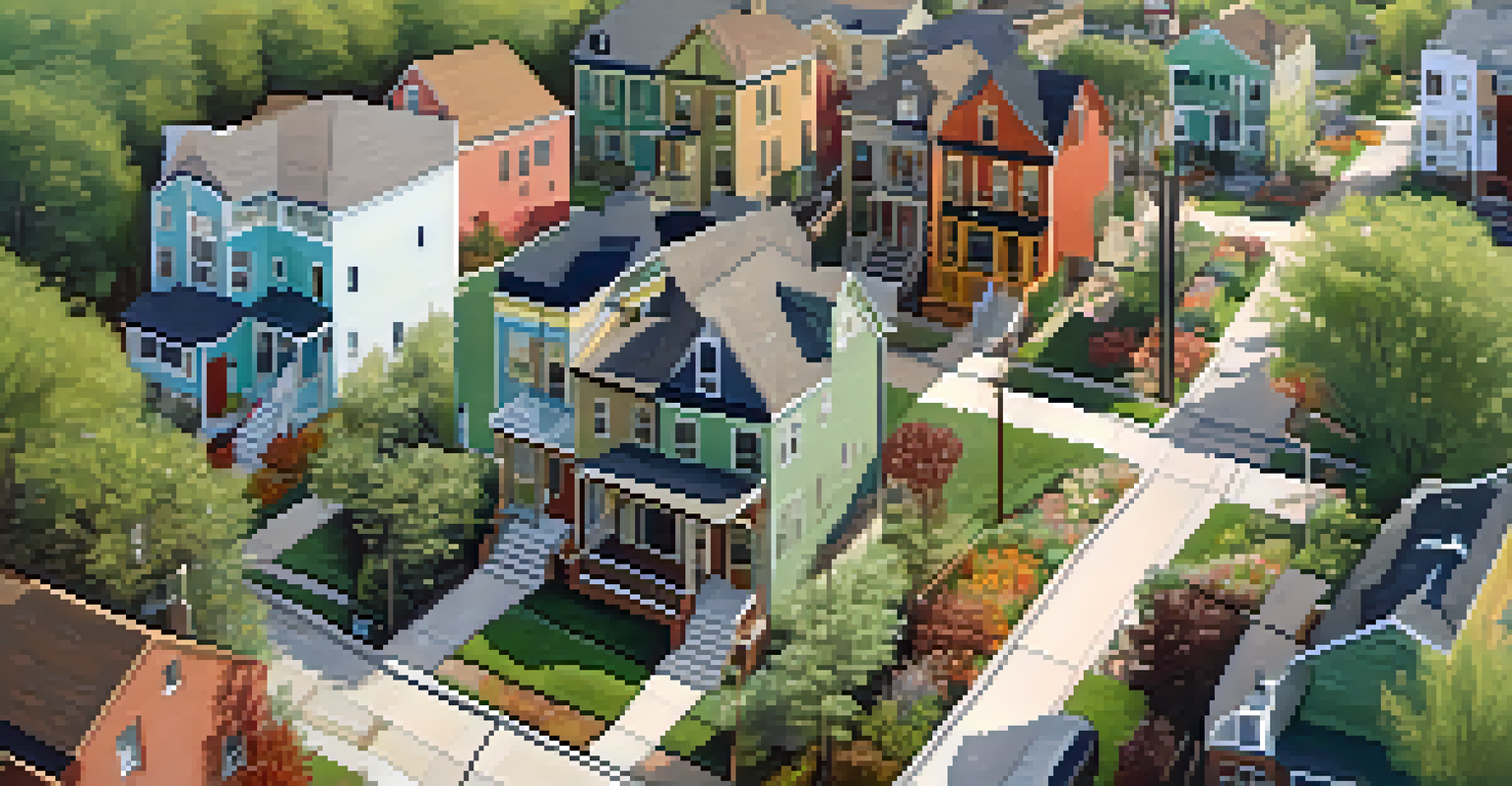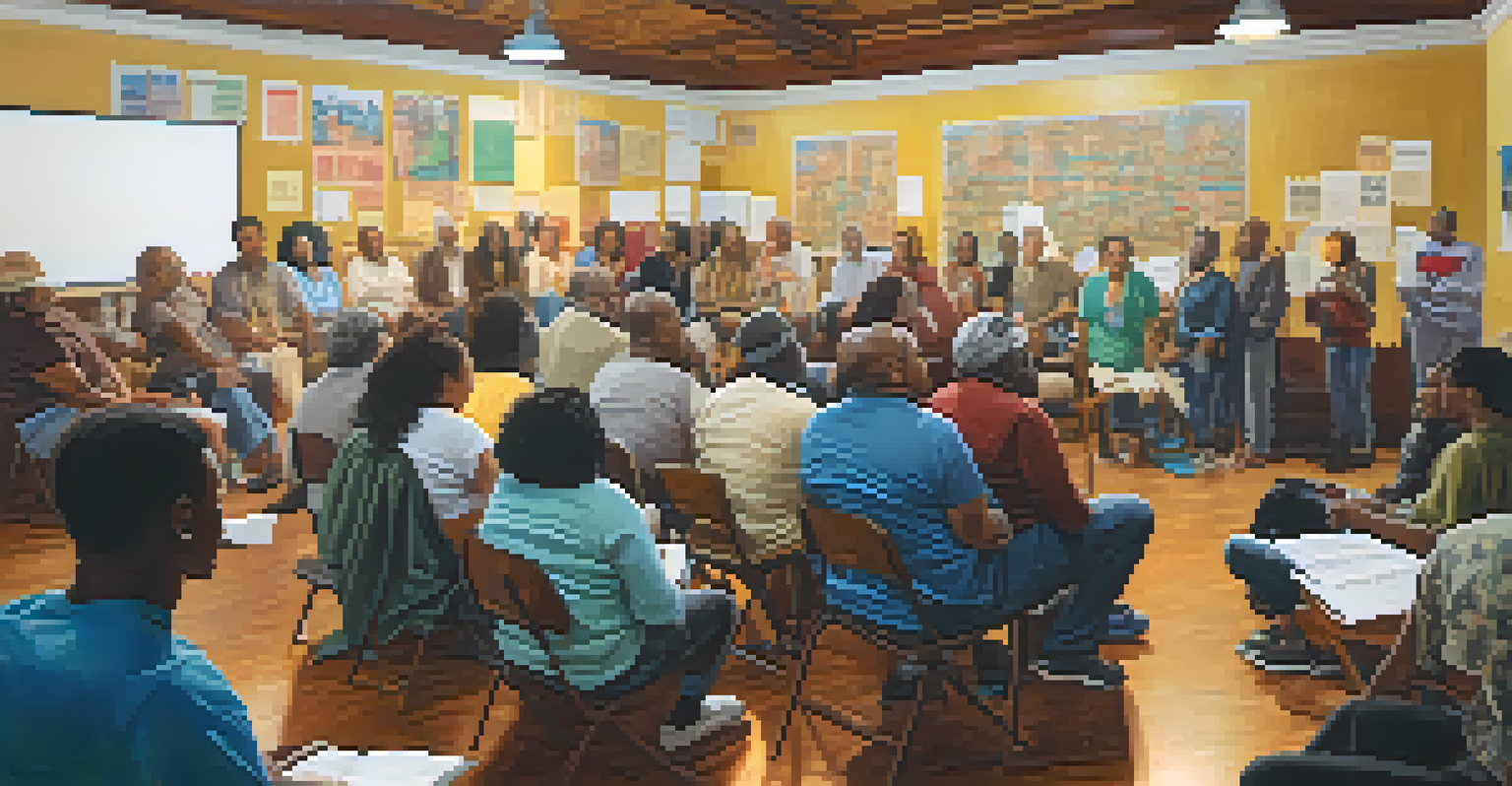Gentrification's Impact on Racial and Ethnic Communities

Understanding Gentrification and Its Roots
Gentrification refers to the process where urban neighborhoods undergo transformation, often leading to the displacement of long-term residents. This phenomenon typically occurs when more affluent individuals move into a historically lower-income area, driven by factors such as lower property prices and proximity to urban amenities. While gentrification can lead to improved infrastructure and local businesses, it can also disrupt the fabric of established communities.
Gentrification is a complex process that can bring both positive and negative changes to neighborhoods, often leading to the displacement of long-term residents.
Historically, gentrification has often been tied to broader economic trends, such as rising housing demand in cities. As neighborhoods become more desirable, property values soar, making it difficult for lower-income families to afford their homes. This process can be particularly impactful in racial and ethnic communities, where residents may already face systemic challenges.
The roots of gentrification can often be traced back to policies and urban planning decisions that prioritize development over community needs. Understanding these origins is crucial, as they set the stage for the complex interactions between economic growth and social equity.
Economic Impacts on Racial and Ethnic Communities
One of the most significant impacts of gentrification is the economic strain it places on racial and ethnic communities. As property values rise, so do rents, forcing many long-time residents to relocate. This economic pressure can lead to a loss of cultural heritage, as diverse communities are often replaced with more homogeneous, affluent populations.

Additionally, the influx of wealthier residents can shift the local job market, often favoring higher-skilled positions that may not be accessible to long-standing community members. This can exacerbate existing inequalities, leaving behind those who cannot keep up with the rapid changes. Local businesses that catered to the original community may struggle to survive or be replaced by upscale establishments.
Gentrification Displaces Communities
The influx of wealthier residents often leads to the displacement of long-term residents, disrupting established social networks.
As economic pressures mount, many community members find themselves caught in a cycle of displacement and financial instability. The challenge lies in finding a balance between revitalizing neighborhoods and preserving the unique identities that make them special.
Social Displacement and Community Fragmentation
Social displacement is another critical aspect of gentrification, often resulting in the fragmentation of tightly-knit communities. When long-term residents are forced to leave, the social networks that have developed over decades begin to unravel. This loss of community can lead to feelings of isolation and a diminished sense of belonging among those who remain.
Communities are not just defined by geography; they are defined by the relationships between people, and when those relationships are disrupted, the essence of the community is lost.
Moreover, the newcomers may not engage with the existing community, leading to cultural clashes and misunderstandings. For instance, new residents may not appreciate the historical significance of local traditions, further alienating long-standing inhabitants. This disconnect can create an environment where collaboration and mutual support diminish.
The implications of social displacement extend beyond individual experiences, impacting local governance and community activism. As the demographics shift, the priorities and concerns of the community can change, often sidelining the voices of those who have lived there the longest.
Cultural Erosion: The Loss of Community Identity
Cultural erosion is a profound consequence of gentrification, particularly in neighborhoods rich in racial and ethnic diversity. As new residents move in, they often bring different cultural norms and preferences, which can overshadow or replace the traditions that have defined the area. This shift can lead to a loss of cultural landmarks, festivals, and local businesses that once thrived.
For instance, family-owned shops that catered to the needs of the original residents may be replaced by chain stores or trendy cafes that do not resonate with the community's heritage. As a result, the rich tapestry of cultural identity that once characterized the neighborhood can fade away, leading to a more homogenized environment.
Cultural Identity at Risk
As new residents move in, the unique cultural landmarks and traditions of original communities may fade, leading to cultural erosion.
Preserving cultural identity amidst gentrification poses a significant challenge. Community members may feel a sense of urgency to advocate for their heritage, but the power dynamics often favor new residents, making it difficult to maintain the vibrancy of established traditions.
Policy Responses to Mitigate Gentrification Effects
Addressing the challenges of gentrification requires thoughtful policy interventions that prioritize the needs of existing residents. Strategies such as affordable housing initiatives, rent control measures, and community land trusts can help ensure that long-term residents are not pushed out of their neighborhoods. These policies aim to create a more equitable landscape where everyone can thrive.
Additionally, local governments can engage in inclusive planning processes that involve community voices in decision-making. By involving residents in discussions about urban development, it’s possible to strike a balance between growth and preservation. This collaborative approach can help foster a sense of ownership and agency among community members.
Ultimately, effective policies should not only address the immediate impacts of gentrification but also work towards long-term solutions that promote social equity and community resilience. The goal is to create neighborhoods that honor their past while embracing the future.
Community Activism: Fighting Back Against Displacement
In the face of gentrification, community activism has emerged as a powerful force advocating for the rights of displaced residents. Grassroots organizations often mobilize to fight for affordable housing, tenant protections, and the preservation of cultural landmarks. These efforts highlight the strength and resilience of marginalized communities in the face of rapid change.
Activists work tirelessly to raise awareness about the impacts of gentrification, often using social media and community events to engage a broader audience. By sharing personal stories and experiences, they humanize the issue, making it relatable to those outside the affected communities. This storytelling approach can galvanize support and foster a sense of solidarity.
Activism Fights Displacement
Community activism plays a crucial role in advocating for the rights of displaced residents and preserving cultural heritage amidst gentrification.
Through organized efforts, communities are not only able to resist displacement but also to reclaim their narratives. By advocating for their needs, residents can push back against trends that threaten their way of life, demonstrating the power of collective action.
The Path Forward: Balancing Growth and Community Needs
As cities continue to grow and evolve, finding a sustainable path forward is crucial. The challenge lies in balancing the economic benefits of gentrification with the need to protect vulnerable communities. This requires a shift in how urban development is approached, prioritizing inclusivity and equity.
One potential solution is to implement mixed-income housing developments that allow for diverse socioeconomic backgrounds to coexist. These models can foster community integration and reduce the risks of displacement by offering affordable options alongside market-rate housing. Such strategies promote a more balanced neighborhood ecosystem.

Ultimately, the goal should be to create vibrant, diverse communities that honor their histories while embracing new opportunities. By valuing the voices of long-term residents and prioritizing their needs, cities can move towards a more equitable future.